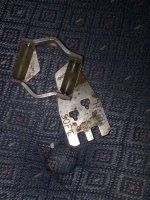John_Mc
Elite Member
- Joined
- Aug 11, 2001
- Messages
- 4,660
- Location
- Monkton, Vermont
- Tractor
- NH TC33D Modified with belly pan, limb risers & FOPS. Honda Pioneer 520 & antique Coot UTV
Which is one of the reasons I don't freehand file with just a round file. I've met dozens of people who think they do a great job at hand filing with nothing but a file. I've met exactly 3 who were actually good enough at it to reliably beat "new, fresh out of the box" performance and durability.The inherent issue with manual sharpening is, being human, you cannot hold the cutting angles and gullet depth consistently across every cutter. You think you can, but in reality you cannot simply because of the human factor.
Far too many (whether hand filing or machine grinding) fail to realize there is more to a good chain sharpening than just making it more aggressive. Often in the act of making a chain more aggressive, they'll sacrifice durability of the chain or cause accelerated wear on various engine components (not to mention making it more wearing on the operator.)

